 Crime
Crime  Crime
Crime  Technology
Technology 10 Hilariously Over-Engineered Solutions to Simple Problems
 Miscellaneous
Miscellaneous 10 Ironic News Stories Straight out of an Alanis Morissette Song
 Politics
Politics 10 Lesser-Known Far-Right Groups of the 21st Century
 History
History Ten Revealing Facts about Daily Domestic Life in the Old West
 Weird Stuff
Weird Stuff 10 Everyday Products Surprisingly Made by Inmates
 Movies and TV
Movies and TV 10 Actors Dragged out of Retirement for One Key Role
 Creepy
Creepy 10 Lesser-Known Shapeshifter Legends from Around the World
 Animals
Animals 10 Amazing Animal Tales from the Ancient World
 Gaming
Gaming 10 Game Characters Everyone Hated Playing
 Crime
Crime 10 Terrifying Serial Killers from Centuries Ago
 Technology
Technology 10 Hilariously Over-Engineered Solutions to Simple Problems
 Miscellaneous
Miscellaneous 10 Ironic News Stories Straight out of an Alanis Morissette Song
Who's Behind Listverse?

Jamie Frater
Head Editor
Jamie founded Listverse due to an insatiable desire to share fascinating, obscure, and bizarre facts. He has been a guest speaker on numerous national radio and television stations and is a five time published author.
More About Us Politics
Politics 10 Lesser-Known Far-Right Groups of the 21st Century
 History
History Ten Revealing Facts about Daily Domestic Life in the Old West
 Weird Stuff
Weird Stuff 10 Everyday Products Surprisingly Made by Inmates
 Movies and TV
Movies and TV 10 Actors Dragged out of Retirement for One Key Role
 Creepy
Creepy 10 Lesser-Known Shapeshifter Legends from Around the World
 Animals
Animals 10 Amazing Animal Tales from the Ancient World
 Gaming
Gaming 10 Game Characters Everyone Hated Playing
10 Things You Won’t Believe Can Spy On You (But Do)
When we think of methods that governments and big corporations use to spy on us, we often think of computers, smartphones, and maybe surveillance cameras. As you are about to find out, these are hardly the only things that can be used to keep tabs on us.
Seemingly innocuous items like toothbrushes, headphones, and children’s toys can be turned into potent espionage devices. This really shouldn’t be a surprise, considering that every manufacturer wants to connect their products to the Internet these days. Big Brother (or at least big business) is watching . . .
10 Robot Vacuums
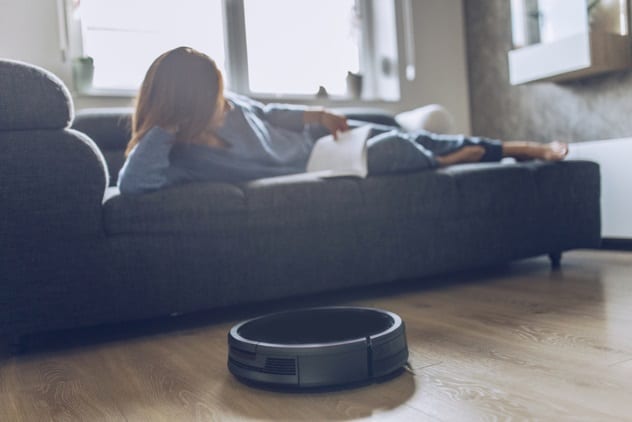
Robot vacuums can be quite convenient, but they can also spy on you. The Roomba iRobot i7+, for example, has been caught spying, and so has the Dongguan Diqee 360.
The iRobot i7+ is capable of making a map of your home when it cleans. Romba says the vacuum needs to create a map of your home so that it knows its way around. The map can also be useful if you want to order the vacuum to clean a specific room. However, Roomba revealed that the iRobot i7+ will also share the map of your home with other smart devices. Why does a vacuum need to share a map of your home?
Well, Roomba did not explain, but you can guess why, considering that the vacuum was jointly developed by Google, the king of spying. While Google insists the sharing is just to allow the robot to integrate with its digital Google Assistant, it’s hard not to imagine them making money off this somehow.[1]
One robot vacuum that is clearly spying on us is the Chinese-made Dongguan Diqee 360. The vacuum has Wi-Fi and night vision-capable 360-degree cameras. Worse, hackers can hack the cameras of the Diqee 360 to spy on you, when Dongguan isn’t spying on you itself.
9 Cars

Our cars spy on us, and we’re not referring only to smart, self-driving models; we mean regular cars. They might not be smart, but they aren’t dumb, either.
Almost every vehicle produced today contains an event data recorder (EDR). The EDR records information about the vehicle, including its location, average speed, condition of the road, and the preferred route of its owner. This information is automatically sent back to the automaker.
Automakers say they use this data to study the behavior of their vehicles during accidents and offer improvement. This information is also shared with law enforcement to detect the cause of accidents. However, this does not mean automakers won’t use this information for other things.
For one, we don’t even know how much information carmakers gather from the cars. We don’t know who owns the information, either. Is it the car owner or the maker? Also, most car owners don’t even know they are being tracked. Automakers and salespeople aren’t very keen on revealing this information, either. So the spying continues.[2]
8 Headphones
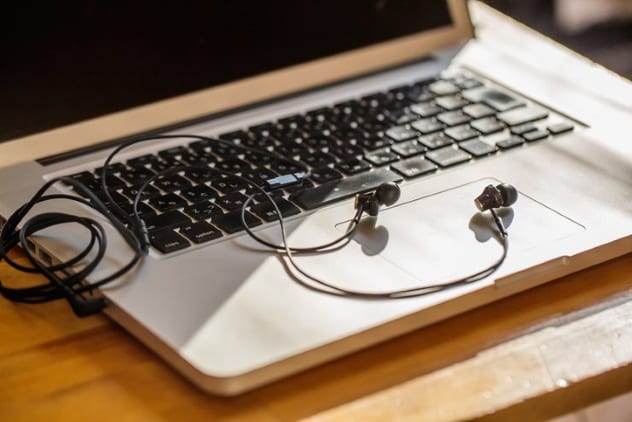
You might be wondering how headphones could spy on us. Well, they’re basically microphones. Headphones and microphones work the same way. It’s just that headphones convert electrical signals to sound, while microphones convert sound to electrical signals.
Interestingly, they can be easily converted to work the other way around. Headphones can be turned into microphones by just plugging them into the dedicated microphone jack of your computer or the the single jack shared by the headphone and microphone in phones and laptops. Talk into them, and they become microphones.
This technology can be exploited to turn headphones into spy microphones—if some corporation, law enforcement, or government spy agency isn’t doing so already. Security researchers at Ben Gurion University in Israel have even created malware that turns headphones into microphones to spy on people.
The malware, which they called Speake(a)r, works by converting the output jacks of the computer into input jacks. The headphones can be used to listen to a person’s conversation whenever they are plugged into the computer.[3]
7 Toothbrushes
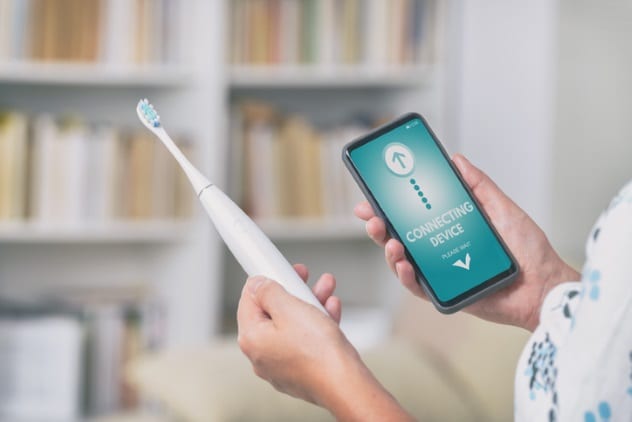
Toothbrushes are slowly moving from dumb plastic rods with soft bristles to gadgets. And as with every other gadget these days, they are being connected to the Internet to spy on us. In 2014, Oral B released a smart toothbrush that connects to specialized Android and iOS apps via Bluetooth.
The toothbrush records every brush stroke and presents it to the user at the end of every brushing session. The toothbrush offers suggestions about how the user could improve their brushing habits and can even send the information to their dentist. Speaking of dentists, they can also use the information to create brushing programs for their patients.
Kolibree also released a similar toothbrush around the same time. It claimed it helped users “outsmart their dentist.” It also added that users could share their brushing information with “dentists and family.” Why should we share our brushing information with our family? Also, there were concerns that the toothbrush could be used to send information to dental product advertisers.[4]
6 Alexa
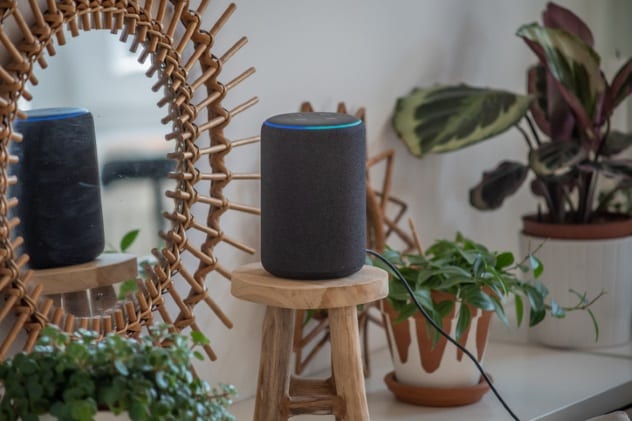
Amazon’s digital assistant, Alexa, spies on you. You may not know this, but Amazon presently employs thousands of people to review voice commands users say to Alexa. The reviewers work nine hours a day, during which they analyze over 1,000 audio commands each.
These reviewers have listened to voice commands the users never thought Alexa or even another human could hear. They have listened to bank details, to private conversations that clearly weren’t directed at Alexa, and, at least once, to a woman singing in the shower.
Two reviewers once listened to what they believed was a sexual assault and reported it to Amazon. Higher-ups mentioned that it was not their responsibility to interfere. Some of these recordings happened when Alexa was switched off, indicating that Alexa either switched on by itself or when it heard something that sounded like an order to switch on. All of this has created privacy and spying concerns about Alexa.
However, Amazon does not call it spying. It says it only reviews voice commands to improve Alexa. Amazon explained, “We use your requests to Alexa to train our speech recognition and natural language understanding systems.” However, the company never mentioned that humans—and not some sort of artificial intelligence—were involved in training Alexa.
While Amazon claims the commands are analyzed anonymously, we know this is not necessarily true. Reviewed recordings often contain the user’s first name, account number, and the product serial number, which could be enough to identify a person.[5]
5 LED Lights

Believe it or not, 171 LED lights at Terminal B of Newark Liberty International Airport in New Jersey provide more than just illumination. They are rigged with sensors and connected to eight video cameras to surveil people in and around the terminal.
The terminal is maintained by the Port Authority of New York and New Jersey. It says the cameras are only used to recognize long airport lines, vehicle license plates, and suspicious activity. However, we all know the system could be used for more. The Port Authority stores any information gathered by the lights and could hand it over to the police on request.[6]
4 Home Security Cameras
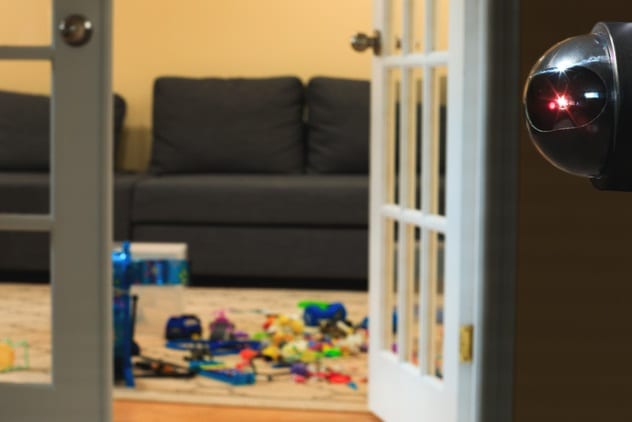
Security cameras are supposed to catch people trying to burgle our homes. However, we have discovered that they can—and do—spy on us, too. The fears of being watched by surveillance cameras have caused privacy concerns among owners and prospective owners of such devices. Users have become so paranoid about being watched by their security cameras that a startup even created one that turns around and faces the wall whenever you are home.
Concerns about spying were raised because security cameras can secretly take videos, pictures, and audio, which are all uploaded to the cloud. The audio capability is the most notorious because these cameras could record conversations that are supposed to be private and confidential.
There is also a flaw with the way the uploaded data is handled because a spouse can use it to spy on their significant other whenever they were away from home. Law enforcement could also order the cloud service provider to hand over the recordings without your consent.[7]
For now, we have caught Ring, a security and doorbell camera maker and subsidiary of Amazon, spying on people with their cameras. Ring says it does not spy on users but only uses recorded videos to improve object recognition—the sort of thing Amazon said with Alexa. However, its reviewers have seen private videos of people kissing, stealing, and shooting guns.
3 Toys

Children often talk to their toys as if they were human and could reveal private information in the process. This is slowly becoming a problem with the advent of smart toys rigged with cameras and microphones. These cameras and microphones sometimes send information to servers operated by the toymaker.
Genesis, a Hong Kong/Los Angeles toymaker, was caught spying on children with its doll called My Friend Cayla. The doll transcribed conversation to text and sent it to third parties. Curiously, when children asked the toy, “Can you keep a secret?” it always replied, “I promise not to tell anyone; it’s just between you and me.”
Hackers can also hack these toys to spy on children, steal pictures, videos, and audio recordings, or identify GPS coordinates that could reveal the location of the child. The Smart Toy Bear by Fisher-Price (a subsidiary of Mattel) has also been discovered to be vulnerable to hackers after researchers at Indiana University found a security flaw that allowed them to access the camera.[8]
2 Computer Mice

Everybody knows their computer spies on them, but most people seem to have ignored the spy capabilities of peripherals like keyboards and mice. Yes, that innocuous-looking mouse could be used to keep tabs on you. It has happened in Singapore.
In 2012, it was reported that Singapore employers were spying on their workers with different gadgets, including calculators, alarm clocks, and their computer mice. The spy mice looked and worked like regular mice, except that they were rigged with microphones and a built-in SIM card. The employer makes a phone call to the mouse, and it starts recording any conversation within 10 meters (33 ft).[9]
1 Smartwatches And Fitness Trackers
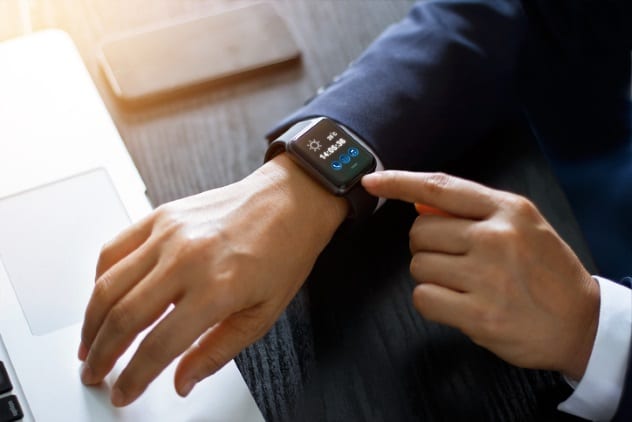
Smartwatches, fitness trackers, and similar smart wearables are another category of spy gadgets that are slowly emerging. These gadgets are so smart that they can use several sources of information to identify the wearer. They can also determine if the wearer is walking, running, or just taking a car, train, or bus.
This isn’t surprising at all when you realize that these wearables can also monitor the wearer’s hand movements to determine if they are entering sensitive information like pin numbers or passwords. Wearables can correctly determine the pin number or pattern used to unlock a cell phone 64 percent of the time, the ATM pin 87 percent of the time, and computer passwords up to 96 percent of the time.[10]
Read about more ways you’re being watched on 10 Ways We Are Being Watched, Monitored And Spied On and 10 Ways China Might Be Spying On You.








